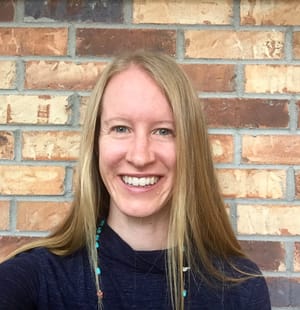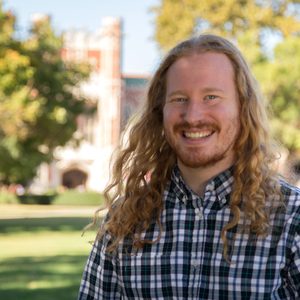I started working with the Learning Agency as I was wrapping up the Spring 2024 semester, with only the summer semester to go before I graduated. Since I only had a short period of time and wanted to act on the opportunity to gain real-world experience, I worked on three different projects between April and August. It was a bit of a mad dash, but I tend to like bouncing from project to project, as it keeps everything fresh.
In this blog post, I’ll give a quick overview of the various projects and summarize my main takeaways! There’s a lot of ground to cover, but I’ll try to keep it organized and (relatively) brief.
Instagram Reels for the Colorado Department of Public Health and Environment:
For this project, I worked with another student (Kat Viviarelli) on developing a series of Instagram reels that covered a variety of sex ed topics. I wrote my last FieldNotes blog post about this project if anyone is interested!

Advanced Zoom Teaching Strategies for UCD:
This was a Rise training for faculty members at UCD covering a variety of strategies for increasing student engagement while teaching classes remotely via Zoom. This included tips for setting expectations, games for breaking the ice and energizing students, how to make Zoom classes more accessible and inclusive, and a variety of interactive digital teaching tools.

EcoFlow Battery Instructions for the CIDE’s Surviving in Place program:
The Surviving in Place program with the Center for Inclusive Design and Engineering (CIDE) is focused on helping people with a variety of disabilities and medical conditions be able to survive during natural disasters and emergencies. In particular, I was working on a program where people who use crucial medical devices at home can apply to receive an EcoFlow battery to supply emergency power during power outages.
With another student (Danny Twieg), I worked on creating videos and job aids for individuals who had received a battery. This included instructions on how to set up the battery correctly, how to use the EcoFlow app, warranty registration, troubleshooting, and how to use the battery to survive in place for at least 72 hours.

Patterns and Culminations:
As I started working with real clients through the Learning Agency, it has been cool to see a lot of my past experiences and studies converge in these projects. My career before the LDT program has been a bit of a winding road! As an undergraduate, I studied theatre at Northwestern University with a focus in costume design. While I was there, I helped to found a student group called Seesaw Theatre, which creates multi-sensory theatrical experiences for kids with autism. After I graduated, I worked as a costume designer and teaching artist for several years in Chicago before moving to Colorado in 2019. I’ve worked in a variety of other educational contexts, from teaching sewing and pattern drafting, to teaching life skills to students on autism spectrum, to tutoring AP Calculus.
As just a couple of examples of how my past work intersected with my work with the Agency, the Instagram reel project felt very aligned with my visual design experience from theatre, and the SIP program was very focused on accessibility and plain language, which felt similar to my work at TJS.
Finding connections between seemingly disparate ideas and contexts is something that I really appreciate about learning experience design. I’ve always considered myself a professional dabbler, and I love finding the ways I can apply old skills in new ways!
Reflections on Real vs. Hypothetical Projects
In general, it felt really great to work as a learning experience designer in a real-life context. As someone with ADHD, I always have too many ideas. For any given problem or project, my brain will generate tens or hundreds of options. This means I am very detail-oriented and good at problem-solving, but also means I struggle a lot when given an open-ended prompt. It’s easy for me to end up drowning in all of the different options and feeling paralyzed.
For many of the hypothetical projects in the LDT program, I have had a lot of trouble trying to narrow my own focus. Many of the assignments were very open-ended, and I sometimes had trouble with understanding where the unspoken limits were. I often can spin off into my own world and come up with something creative, but that didn’t always align with the rubric and sometimes ended in a poor grade until I explained my thought process. Generally my professors were flexible and I was able to resolve these situations, but that’s been a frustration.
When working on a real project with a real client, these issues didn’t come up in the same way. Based on my conversations, I am given much more concrete information. Or, if they don’t care, I can use the other criteria provided to make a choice that fits with the rest of the project. This came up in the Advanced Zoom Teaching Strategies, where the parameters were pretty flexible. I chose a design aesthetic and approach that worked for me and developed a lot of relevant material. Then, when I started to feel like I was covering too many different topics, I asked Rosanna to help me choose what the most important pieces were and what could be cut.
In closing
Overall, working with the Learning Agency was a really good experience! I now feel much more confident that I will be able to take the skills I learned in the LDT program and apply them to new projects and jobs in the future.
Thanks y’all, it’s been fun!











Member discussion